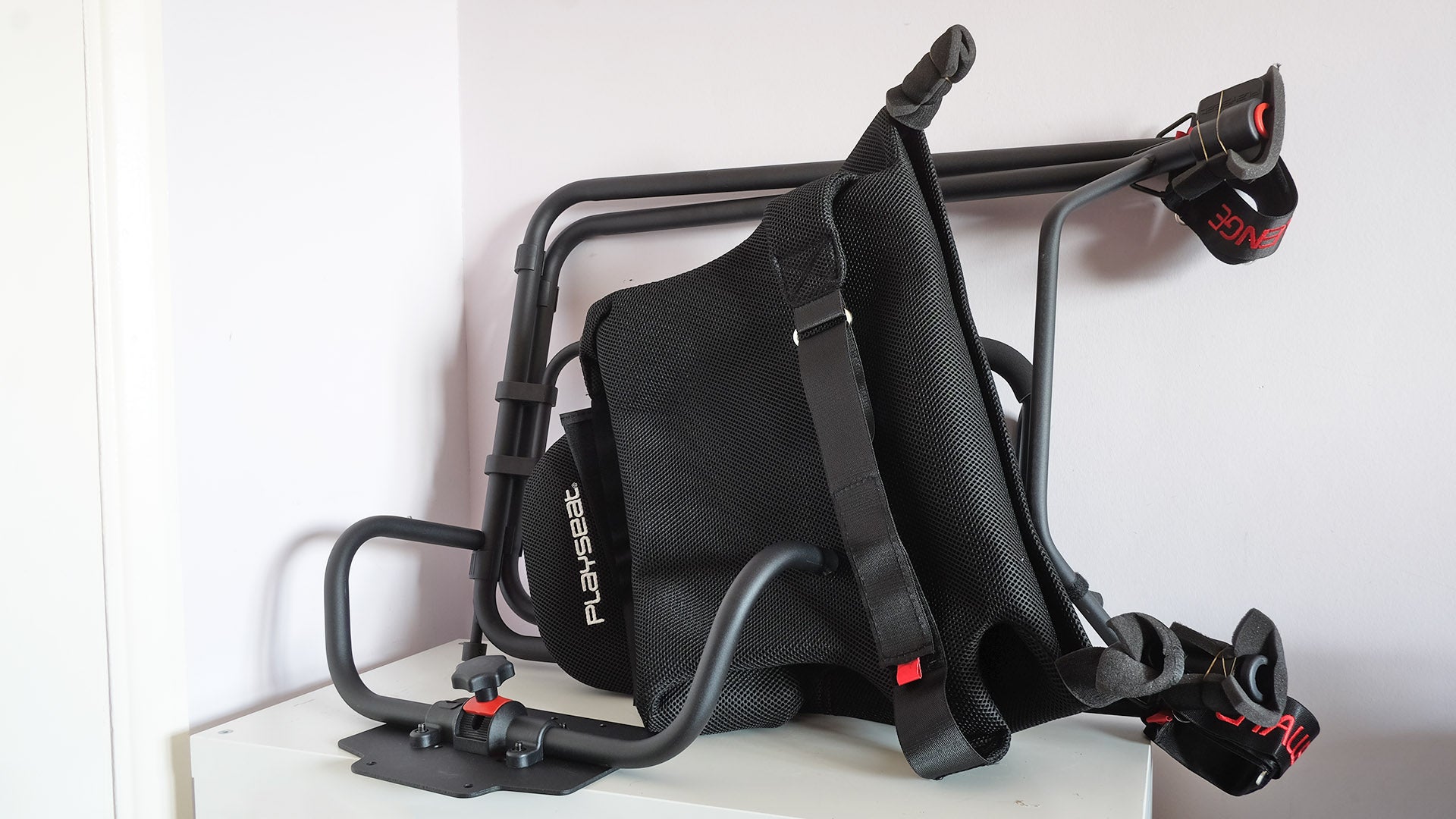Verdict
This highly successful racing seat deserves a proper design refresh at this point to address a couple of its shortcomings, but it remains a strong option for those who need something they can pack up and set up quickly.
Pros
- Brilliantly convenient
- Comfortable
- Sturdy, considering its design
Cons
- Inflexible customisation
- No shifter support as standard
- Not suitable for larger folks, or anyone with mobility issues
-
ActiFit fabricThe seat cover of this version of the Challenge is ActiFit, described as a “vertical microfibre” pattern that promotes airflow. -
Foldable designThis is a foldable design that can be stowed away in a matter or seconds, making it possibly the most convenient seat of this style. -
Scissor frameThe basic frame is similar to that of a camping that, using a scissor hinge at the centre and velcro to keep it upright.
Introduction
The Challenge is Playseat’s most approachable and practical racing seat for the average gamer. It’s the cheapest in the line-up too.
This is a fold-up racing seat, for folks who don’t have the space to keep one in place all year round. You can pack it up in seconds, even with the wheel attached in most cases.
Playseat has kept the Challenge design simple to avoid sacrificing too much structural integrity at the altar of foldability. However, this also means it isn’t a seat for those who might struggle to get out of a bucket-style racing seat. And it’s not quite adjustable enough for some setups. Still, it is the solution many of you are looking for.
Price and availability
This family of seats has been around an awful long time, since 2013. While the basics of the design have not changed in a decade, I’m reviewing a much newer variant of the chair, the Challenge ActifFit.
It uses a different fabric, ActiFit in place of Alcantara. It’s made to be extra breathable, and stop your back from getting too sweaty. Either model has an original recommended price of £200/$249.
Assembly
- Easy to stow away
- Not ideal for larger folks
The big sell of the Playseat Challenge is it is effectively a full cockpit that can be folded up to a size smaller than that of most wheel stands, which don’t provide the seat part at all. It’s a compelling concept.
The racing bucket seat these chairs try to emulate typically has a hard frame that forms a curved shape where your posterior ends up fairly close to the ground. Playseat attempts to get the same effect with what is more like a hammock.
While there’s a metal frame folding it in a few places, it’s mostly carefully cut material and gravity doing the work here. And you know what? The Playseat Challenge is a pretty damn comfortable chair. That hammock-like effect makes it conform to your body, and the way it is attached to the frame by your lower-mid back provides surprisingly good lumbar support. This is important for longer sessions. It’s an oddly near-ideal seat in this respect.
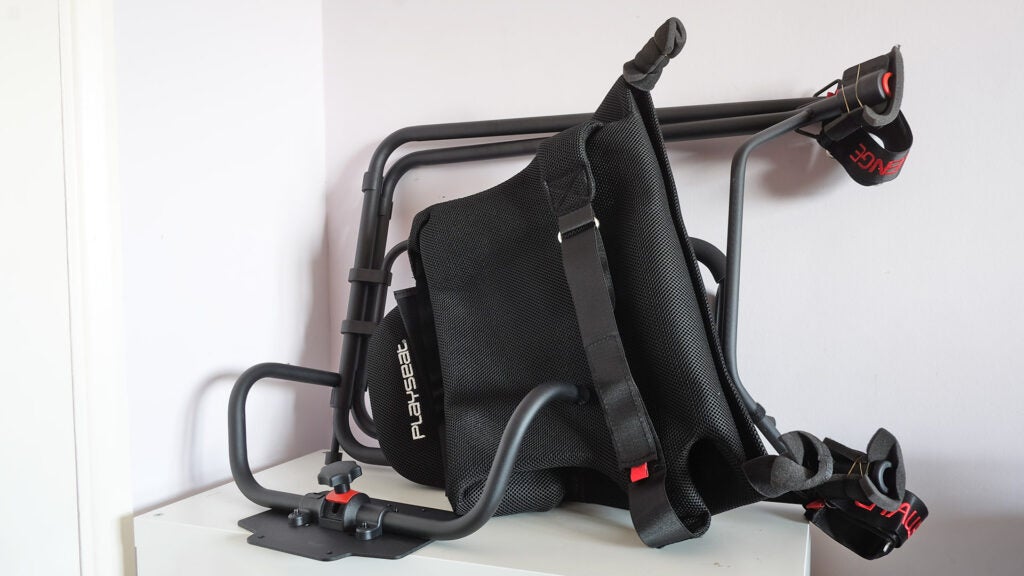
Well, as long as you’re not too large of a person. Playseat recommends it for players of up to 113kg/270lb. I think that may be a stretch. There’s only so much horizontal clearance in the seat area too, because of the way the Challenge holds together. I’m nowhere near that upper limit and I still find the Challenge a bit of a trial to get out of. You can help matters by unlocking and swinging open the front part of the frame, meaning you don’t have to lift yourself out quite so completely.
However, I find this feels precarious if you have a heavier racing wheelbase. It starts to feel like mounting a gigantic camera zoom lens onto a tiny camera body.
The metal frame has a free-twisting hinge at its middle, and Playseat uses a series of chunky velcro pads to both attach the seat part and stop the whole thing from collapsing to the floor. See those almost armrest-like parts to each side? They are heavy-duty velcro pads that hold the chair up.
I’ve seen people online complaining that their elbows keep rubbing against these straps when driving. I haven’t had that problem, but this style is a compromise. And it’s not the only solution. The cheaper ADX Firebase CC223 uses rigid poles, more like the arms of a chair. The Next Level Racing GTLite has a more advanced frame design, with securing mechanisms throughout, rather than relying on velcro.
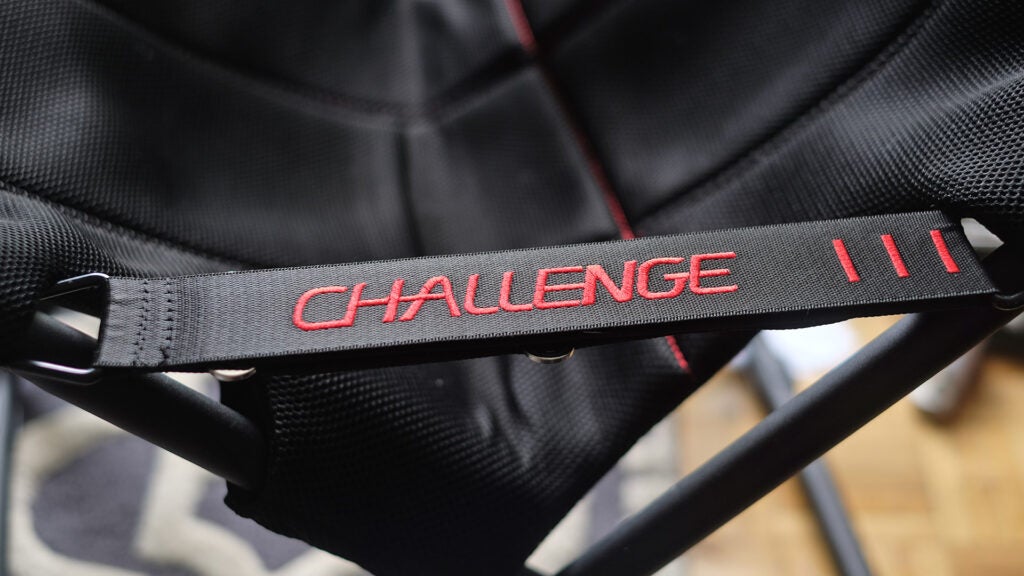
There’s room on the Playseat Challenge for your pedals too, of course. They sit on foam-lined metal frame bars that curl up at the end, to avoid you pushing the pedal set off into the distance when you depress the brake.
There’s also (you guessed it) an optional velcro strap that can be used to more firmly cement the board to the metal runners.
When you come to store the Playseat Challenge away, this pedal mount part flips up to lie more-or-less flat with the main part of the frame.
However, it doesn’t angle the pedals upwards at all, as many cockpits do. You can, however, push the pedals further away by extending the metal poles. They are then held in place by pretty weak-looking plastic screws that simply apply pressure to the metal tubing below. This might be the weakest part of the Playseat Challenge. Still, the experience is acceptable as long as you are using pedals with a flat bottom.
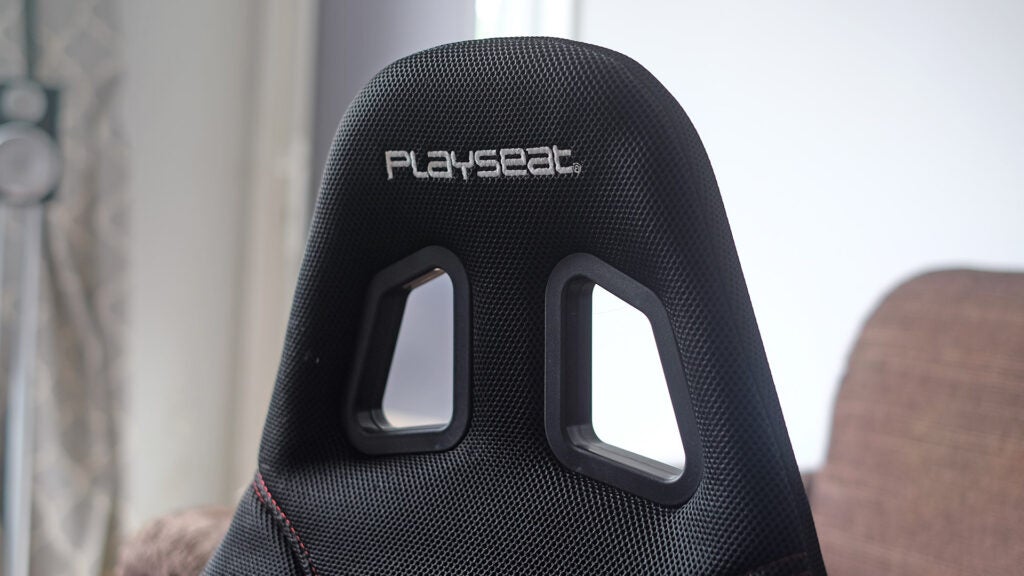
Design and Features
- Limited adjustability
- Pedal mount design is a little crude
- Feels sturdier than you might guess
The strength of the Playseat Challenge is less the frame, and more the fabric of the seat itself. Playseat makes chairs made of Alcantara and its ActiFit fabric. Alcantara is a high-quality man-made suede. I have the ActiFit version, which is closer to the kind of porous fabric you might find on the back of a ventilated rucksack.
It’s designed to stop you getting sweaty, although I’d recommend the Alcantara version if you want a more luxurious feel. In either, you get racing seat-like cut-outs towards the top of the seat, which look the part and are cushioned.
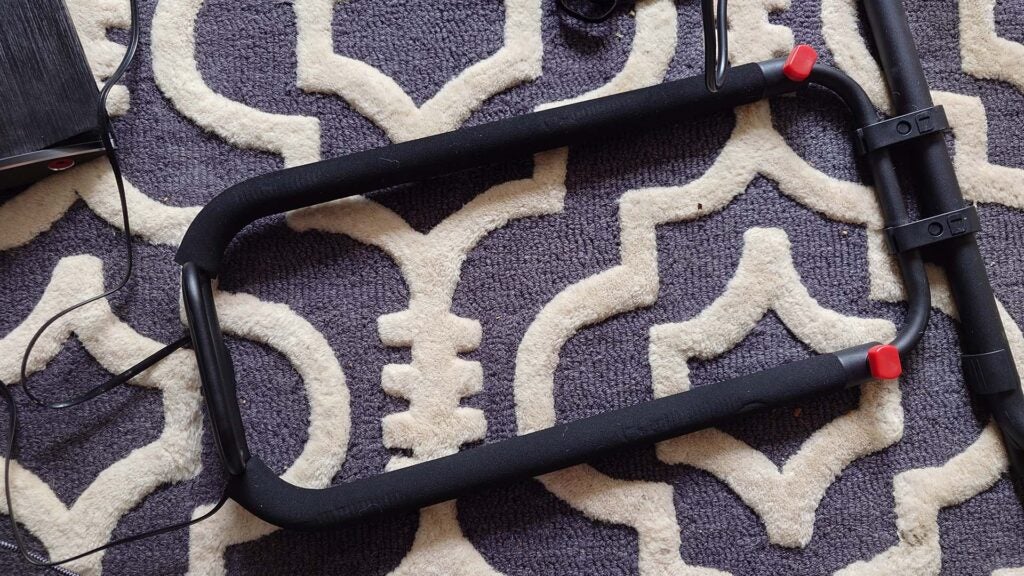
I tried both the Thrustmaster T-LCM, which work great, and the C. These are not well-suited to the Challenge as the Fanatec’s rubber feet don’t properly line up with the slim foam cover of the pedal stand here, and the pedal set does not have a flat base. And if you plan on using a powerful load cell brake, you will likely want to get something more substantial either way.
I also find that, when testing the Thrustmaster T818 in this case, the Playseat Challenge lifts the wheelbase high enough that it obscures part of my TV while playing. It’s one to bear in mind for living room rigs where you’ll play off the TV, particularly as the main seat adjustment doesn’t really help. While you can adjust the armrest-like velcro straps to alter the seating position, when you attempt to raise the seat a bit, the wheel rises too.

You can only adjust the angle of the wheel independently, not its distance from you or its height. It sits on a plastic ratcheting system that lets you alter the angle quite dynamically. This seems a bold choice on Playseat’s part when the simplicity of the frame design seems to be here to maximise structural integrity. It works fine, but does introduce some up-down flexion that otherwise would not be here.
The Playseat Challenge’s actual wheel mounting plate is a sturdy block of metal. It’s impressively tough, and has mounting points for most popular wheel styles. Playseat also employs a little telescopic metal arm that pops out of one end of the base. It’s a smart move that significantly increases lateral stability here.
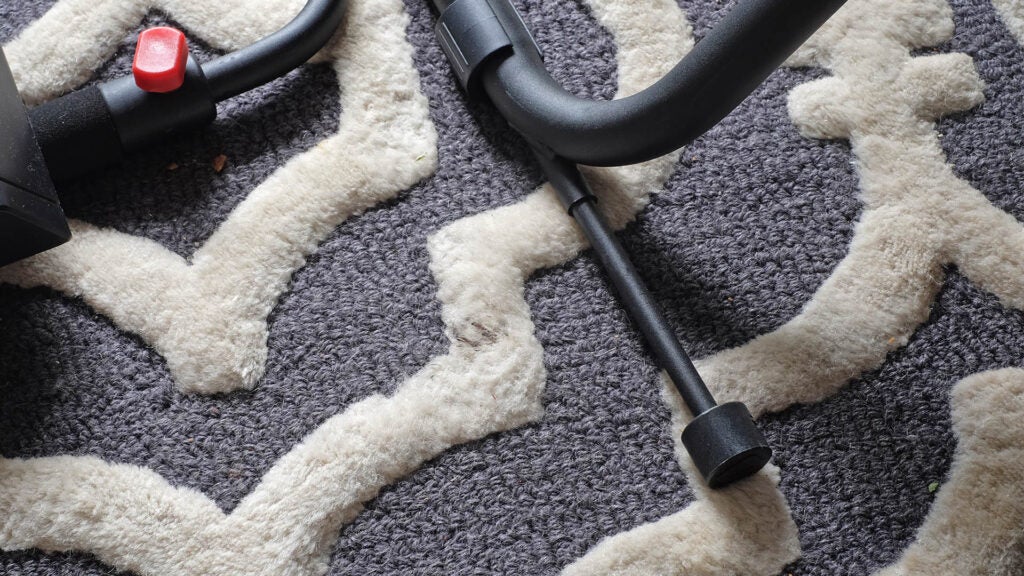
Given you might assume this is a “weedy” racing wheel seat, I’ve been impressed by how sturdy it feels as you actually drive. While there’s more flex if you drive under pressure, you’re generally moving along with it thanks to the frame design. It’s much less distracting than the “wobble” of a stand where the wheel is held up using a column sat between your legs.
There’s no way to attach a dedicated shifter or handbrake, but shifter mount mods are readily available at the time of review. It’s one of the benefits of buying a mainstream, popular chair like this.
Latest deals
Should you buy it?
You want compact convenience:The Playseat Challenge is a king of convenience. You can pack it away in a minute, and it can be folded up to a fairly compact package if you remove the actual racing wheel and pedals.
You want cutting-edge design and a larger build: This decade-old design is unsurprisingly showing its age a bit in its pedal board mount and somewhat basic fit customisation. It’s also definitely not the right option for the larger folks out there.
Final Thoughts
The Playseat Challenge is a basic racing wheelchair that is big on convenience, but not quite as hot on customisation. It’s what you’d get if you merged a cockpit with a camping chair. And perhaps that is exactly what you need.
It’s comfortable, and there are enough smart design touches to make it suitable for moderately heavy wheel setups, up to at least the Thrustmaster T818 direct drive wheelbase.
However, you don’t get much in the way of tweakability here, and some folks will find it too much of a pain to simply get in and out of the chair. 10 years down the line, other brands have unsurprisingly taken the basics of this design to new places, perhaps most notably the Next Level Racing GT Lite.
How we test
We use every gaming chair we review as our main chair for both work and gaming for at least a week. We also build the chair ourselves to test out the assembly process, and make use of every available feature. We take multiple factors into consideration for the final verdict, including comfort, build quality, features and price.
Tested over multiple weeks
We assemble the chair ourselves to see how easy it is to build.
FAQs
We find it comfortable to sit on for longer periods, but it’s not ideal for larger folks and isn’t the easiest to get out of.
We don’t think it’s a good fit for the heaviest of racing wheels, but the sturdy frame and stabiliser arm make it seem sturdy considering the design style.
It is moderately adjustable, although the scissor hinge design means the wheel height and chair height are interconnected.


















